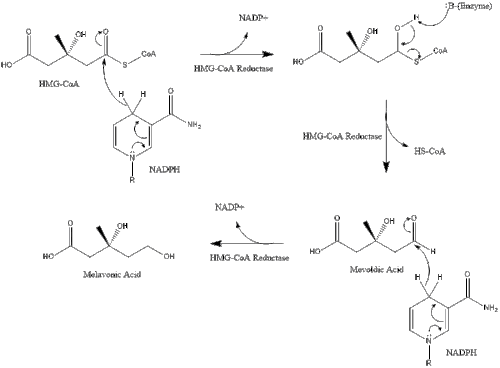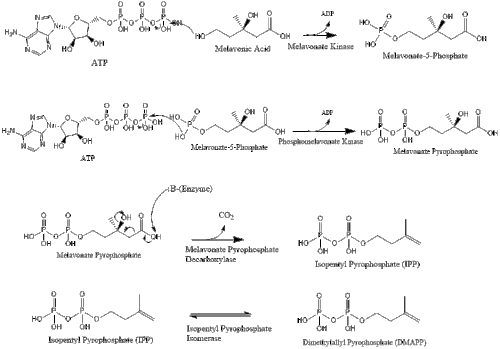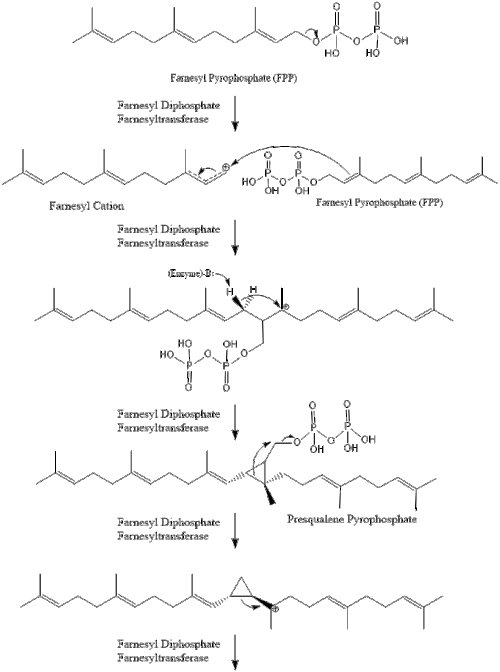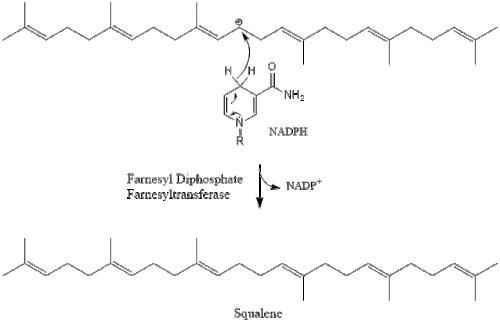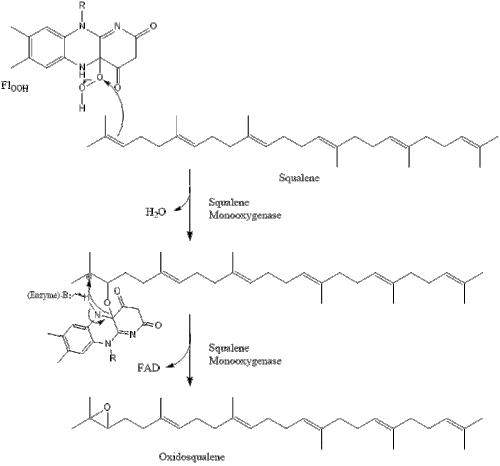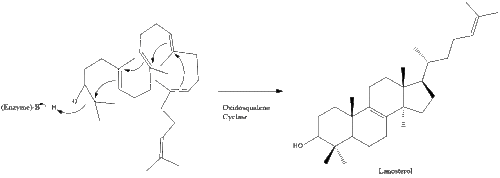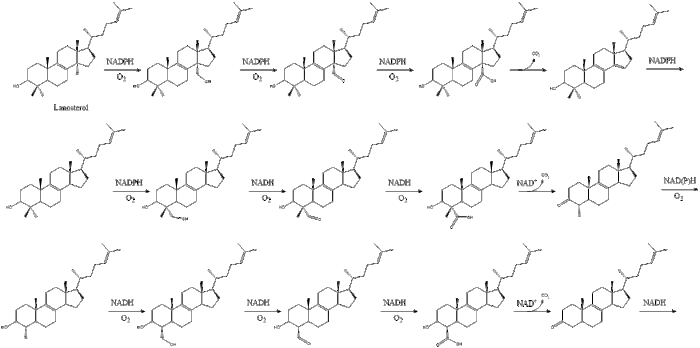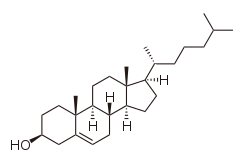
| |

| |

| |
| Names | |
|---|---|
| IUPAC name
(3β)-cholest-5-en-3-ol
| |
| Systematic IUPAC name
(3S,8S,9S,10R,13R,14S,17R)-10,13-dimethyl-17-[(2R)-6-methylheptan-2-yl]-2,3,4,7,8,9,11,12,14,15,16,17-dodecahydro-1H-cyclopenta[a]phenanthren-3-ol
| |
| Other names
Cholesterin, Cholesteryl alcohol
| |
| Identifiers | |
3D model (JSmol)
|
|
| ChEBI | |
| ChEMBL | |
| ChemSpider | |
| ECHA InfoCard | 100.000.321 |
| KEGG | |
PubChem CID
|
|
| UNII | |
| Properties | |
| C27H46O | |
| Molar mass | 386.65 g/mol |
| Appearance | white crystalline powder |
| Density | 1.052 g/cm3 |
| Melting point | 148 to 150 °C (298 to 302 °F; 421 to 423 K) |
| Boiling point | 360 °C (680 °F; 633 K) (decomposes) |
| 1.8 mg/L (30 °C) 0.095 mg/L (30 °C) | |
| Solubility | soluble in acetone, benzene, chloroform, ethanol, ether, hexane, isopropyl myristate, methanol |
| -284.2·10−6 cm3/mol | |
| Hazards | |
| Flash point | 209.3 ±12.4 °C |
Except where otherwise noted, data are given for materials in their standard state (at 25 °C [77 °F], 100 kPa).
| |
Cholesterol (from the Ancient Greek chole- (bile) and stereos (solid), followed by the chemical suffix -ol for an alcohol) is an organic molecule. It is a sterol (or modified steroid), a type of lipid molecule, and is biosynthesized by all animal cells, because it is an essential structural component of all animal cell membranes.
In addition to its importance for animal cell structure, cholesterol also serves as a precursor for the biosynthesis of steroid hormones, bile acid and vitamin D. Cholesterol is the principal sterol synthesized by all animals. In vertebrates, hepatic cells typically produce the greatest amounts. It is absent among prokaryotes (bacteria and archaea), although there are some exceptions, such as Mycoplasma, which require cholesterol for growth.
François Poulletier de la Salle first identified cholesterol in solid form in gallstones in 1769. However, it was not until 1815 that chemist Michel Eugène Chevreul named the compound "cholesterine".
Physiology
Since
cholesterol is essential for all animal life, each cell is capable of
synthesizing it by way of a complex 37-step process, beginning with the mevalonate pathway and ending with a 19-step conversion of lanosterol to cholesterol. Furthermore, it can be absorbed directly from animal-based foods.
A human male weighing 68 kg (150 lb) normally synthesizes about 1
gram (1,000 mg) per day, and his body contains about 35 g, mostly
contained within the cell membranes. Typical daily cholesterol dietary
intake for a man in the United States is 307 mg.
Most ingested cholesterol is esterified,
and esterified cholesterol is poorly absorbed. The body also
compensates for any absorption of additional cholesterol by reducing
cholesterol synthesis.
For these reasons, cholesterol in food, seven to ten hours after
ingestion, has little, if any effect on concentrations of cholesterol in
the blood. However, during the first seven hours after ingestion of
cholesterol, as absorbed fats are being distributed around the body
within extracellular water by the various lipoproteins (which transport all fats in the water outside cells), the concentrations increase.
It is also important to recognize, however, that the concentrations
measured in the samples of blood plasma vary with the measurement
methods used. Traditional, cheaper methods do not reflect (a) which
lipoproteins are transporting the various fat molecules, nor (b) which
cells are ingesting, burning or exporting the fat molecules being
measured as totals from samples of blood plasma.
Cholesterol is recycled in the body. The liver
excretes it in a non-esterified form (via bile) into the digestive
tract. Typically, about 50% of the excreted cholesterol is reabsorbed by
the small intestine back into the bloodstream
.
Plants make cholesterol in very small amounts. Plants manufacture phytosterols
(substances chemically similar to cholesterol), which can compete with
cholesterol for reabsorption in the intestinal tract, thus potentially
reducing cholesterol reabsorption.
When intestinal lining cells absorb phytosterols, in place of
cholesterol, they usually excrete the phytosterol molecules back into
the GI tract, an important protective mechanism. The intake of naturally occurring phytosterols, which encompass plant sterols and stanols, ranges between ~200–300 mg/day depending on eating habits. Specially designed vegetarian experimental diets have been produced yielding upwards of 700 mg/day.
Function
Cholesterol, given that it composes about 30% of all animal cell membranes, is required to build and maintain membranes and modulates membrane fluidity over the range of physiological temperatures. The hydroxyl group of each cholesterol molecule interacts with the water molecules surrounding the membrane as do the polar heads of the membrane phospholipids and sphingolipids, while the bulky steroid and the hydrocarbon chain are embedded in the membrane, alongside the nonpolar fatty-acid chain
of the other lipids. Through the interaction with the phospholipid
fatty-acid chains, cholesterol increases membrane packing, which both
alters membrane fluidity
and maintains membrane integrity so that animal cells do not need to
build cell walls (like plants and most bacteria). The membrane remains
stable and durable without being rigid, allowing animal cells to change
shape and animals to move.
The structure of the tetracyclic ring of cholesterol contributes to the fluidity of the cell membrane, as the molecule is in a trans conformation making all but the side chain of cholesterol rigid and planar. In this structural role, cholesterol also reduces the permeability of the plasma membrane to neutral solutes, hydrogen ions, and sodium ions.
Within the cell membrane, cholesterol also functions in
intracellular transport, cell signaling and nerve conduction.
Cholesterol is essential for the structure and function of invaginated caveolae and clathrin-coated pits, including caveola-dependent and clathrin-dependent endocytosis. The role of cholesterol in endocytosis of these types can be investigated by using methyl beta cyclodextrin
(MβCD) to remove cholesterol from the plasma membrane. Recent studies
show that cholesterol is also implicated in cell signaling processes,
assisting in the formation of lipid rafts in the plasma membrane, which brings receptor proteins in close proximity with high concentrations of second messenger molecules.
In multiple layers, cholesterol and phospholipids, both electrical
insulators, can facilitate speed of transmission of electrical impulses
along nerve tissue. For many neuron fibers, a myelin sheath, rich in cholesterol since it is derived from compacted layers of Schwann cell membrane, provides insulation for more efficient conduction of impulses. Demyelination (loss of some of these Schwann cells) is believed to be part of the basis for multiple sclerosis.
Within cells, cholesterol is also a precursor molecule for
several biochemical pathways. For example, it is the precursor molecule
for the synthesis of vitamin D and all steroid hormones, including the adrenal gland hormones cortisol and aldosterone, as well as the sex hormones progesterone, estrogens, and testosterone, and their derivatives.
The liver excretes cholesterol into biliary fluids, which is then stored in the gallbladder. Bile contains bile salts,
which solubilize fats in the digestive tract and aid in the intestinal
absorption of fat molecules as well as the fat-soluble vitamins, A, D, E, and K.
Biosynthesis and regulation
Biosynthesis
All
animal cells manufacture cholesterol, for both membrane structure and
other uses, with relative production rates varying by cell type and
organ function. About 80% of total daily cholesterol production occurs
in the liver and the intestines; other sites of higher synthesis rates include adrenal glands, and reproductive organs.
Synthesis within the body starts with the mevalonate pathway where two molecules of acetyl CoA condense to form acetoacetyl-CoA. This is followed by a second condensation between acetyl CoA and acetoacetyl-CoA to form 3-hydroxy-3-methylglutaryl CoA (HMG-CoA).
This molecule is then reduced to mevalonate by the enzyme HMG-CoA reductase. Production of mevalonate is the rate-limiting and irreversible step in cholesterol synthesis and is the site of action for statins (a class of cholesterol lowering drugs).
Mevalonate is finally converted to isopentenyl pyrophosphate (IPP) through two phosphorylation steps and one decarboxylation step that requires ATP.
Three molecules of isopentenyl pyrophosphate condense to form farnesyl pyrophosphate through the action of geranyl transferase.
Two molecules of farnesyl pyrophosphate then condense to form squalene by the action of squalene synthase in the endoplasmic reticulum.
Oxidosqualene cyclase then cyclizes squalene to form lanosterol. Finally, lanosterol is converted to cholesterol through a 19-step process.
The final 19 steps to cholesterol contain NADPH and oxygen to help oxidize methyl groups for removal of carbons, mutases to move alkene groups, and NADH to help reduce ketones.
Konrad Bloch and Feodor Lynen shared the Nobel Prize in Physiology or Medicine in 1964 for their discoveries concerning some of the mechanisms and methods of regulation of cholesterol and fatty acid metabolism.
Regulation of cholesterol synthesis
Biosynthesis of cholesterol is directly regulated by the cholesterol levels present, though the homeostatic
mechanisms involved are only partly understood. A higher intake from
food leads to a net decrease in endogenous production, whereas lower
intake from food has the opposite effect. The main regulatory mechanism
is the sensing of intracellular cholesterol in the endoplasmic reticulum by the protein SREBP (sterol regulatory element-binding protein 1 and 2). In the presence of cholesterol, SREBP is bound to two other proteins: SCAP (SREBP cleavage-activating protein) and INSIG-1. When cholesterol levels fall, INSIG-1 dissociates from the SREBP-SCAP complex, which allows the complex to migrate to the Golgi apparatus.
Here SREBP is cleaved by S1P and S2P (site-1 protease and site-2
protease), two enzymes that are activated by SCAP when cholesterol
levels are low.
The cleaved SREBP then migrates to the nucleus, and acts as a transcription factor to bind to the sterol regulatory element (SRE), which stimulates the transcription of many genes. Among these are the low-density lipoprotein (LDL) receptor and HMG-CoA reductase.
The LDL receptor scavenges circulating LDL from the bloodstream,
whereas HMG-CoA reductase leads to an increase of endogenous production
of cholesterol. A large part of this signaling pathway was clarified by Dr. Michael S. Brown and Dr. Joseph L. Goldstein in the 1970s. In 1985, they received the Nobel Prize in Physiology or Medicine
for their work. Their subsequent work shows how the SREBP pathway
regulates expression of many genes that control lipid formation and
metabolism and body fuel allocation.
Cholesterol synthesis can also be turned off when cholesterol
levels are high. HMG-CoA reductase contains both a cytosolic domain
(responsible for its catalytic function) and a membrane domain. The
membrane domain senses signals for its degradation. Increasing
concentrations of cholesterol (and other sterols) cause a change in this
domain's oligomerization state, which makes it more susceptible to
destruction by the proteosome. This enzyme's activity can also be reduced by phosphorylation by an AMP-activated protein kinase.
Because this kinase is activated by AMP, which is produced when ATP is
hydrolyzed, it follows that cholesterol synthesis is halted when ATP
levels are low.
Plasma transport and regulation of absorption
Lipid
logistics: transport of triglycerides and cholesterol in organisms in
form of lipoproteins as chylomicrons, VLDL, LDL, IDL, HDL.
As an isolated molecule, cholesterol is only minimally soluble in water;
it dissolves into the (water-based) bloodstream only at exceedingly
small concentrations. Instead, cholesterol is transported within lipoproteins, complex discoidal particles with exterior amphiphilic
proteins and lipids, whose outward-facing surfaces are water-soluble
and inward-facing surfaces are lipid-soluble; i.e. transport via emulsification. Triglycerides
and cholesterol esters are carried internally. Phospholipids and
cholesterol, being amphipathic, are transported in the monolayer surface
of the lipoprotein particle.
There are several types of lipoproteins in the blood. In order of increasing density, they are chylomicrons, very-low-density lipoprotein (VLDL), intermediate-density lipoprotein (IDL), low-density lipoprotein (LDL), and high-density lipoprotein
(HDL). Lower protein/lipid ratios make for less dense lipoproteins.
Cholesterol within different lipoproteins is identical, although some is
carried as its native "free" alcohol form (the cholesterol-OH group
facing the water surrounding the particles), while others as fatty acyl
esters, known also as cholesterol esters, within the particles.
Lipoprotein particles are organized by complex apolipoproteins,
typically 80–100 different proteins per particle, which can be
recognized and bound by specific receptors on cell membranes, directing
their lipid payload into specific cells and tissues currently ingesting
these fat transport particles. Lipoprotein particles thus include a
molecular addresses which play key roles in distribution and delivery of
fats around the body in the water outside cells.
Chylomicrons, the least dense cholesterol transport molecules, contain apolipoprotein B-48, apolipoprotein C, and apolipoprotein E (the principal cholesterol carrier in the brain)
in their shells. Chylomicrons carry fats from the intestine to muscle
and other tissues in need of fatty acids for energy or fat production.
Unused cholesterol remains in more cholesterol-rich chylomicron
remnants, and taken up from here to the bloodstream by the liver.
VLDL molecules are produced by the liver from triacylglycerol and cholesterol which was not used in the synthesis of bile acids. These molecules contain apolipoprotein B100 and apolipoprotein E in their shells, and are degraded by lipoprotein lipase on the blood vessel wall to IDL.
Blood vessels cleave and absorb triacylglycerol
from IDL molecules, increasing the concentration of cholesterol. IDL
molecules are then consumed in two processes: half is metabolized by HTGL
and taken up by the LDL receptor on the liver cell surfaces, while the
other half continues to lose triacylglycerols in the bloodstream until
they become LDL molecules, with the highest concentration of cholesterol
within them.
LDL particles are the major blood cholesterol carriers. Each one
contains approximately 1,500 molecules of cholesterol ester. LDL
molecule shells contain just one molecule of apolipoprotein B100, recognized by LDL receptors in peripheral tissues. Upon binding of apolipoprotein B100, many LDL receptors concentrate in clathrin-coated pits. Both LDL and its receptor form vesicles within a cell via endocytosis. These vesicles then fuse with a lysosome, where the lysosomal acid lipase
enzyme hydrolyzes the cholesterol esters. The cholesterol can then be
used for membrane biosynthesis or esterified and stored within the cell,
so as to not interfere with the cell membranes.
LDL receptors are used up during cholesterol absorption, and its synthesis is regulated by SREBP, the same protein that controls the synthesis of cholesterol de novo,
according to its presence inside the cell. A cell with abundant
cholesterol will have its LDL receptor synthesis blocked, to prevent new
cholesterol in LDL molecules from being taken up. Conversely, LDL
receptor synthesis proceeds when a cell is deficient in cholesterol.
When this process becomes unregulated, LDL molecules without
receptors begin to appear in the blood. These LDL molecules are oxidized
and taken up by macrophages,
which become engorged and form foam cells. These foam cells often
become trapped in the walls of blood vessels and contribute to atherosclerotic plaque
formation. Differences in cholesterol homeostasis affect the
development of early atherosclerosis (carotid intima-media thickness).
These plaques are the main causes of heart attacks, strokes, and other
serious medical problems, leading to the association of so-called LDL
cholesterol (actually a lipoprotein) with "bad" cholesterol.
HDL particles are thought to transport cholesterol back to the
liver, either for excretion or for other tissues that synthesize
hormones, in a process known as reverse cholesterol transport (RCT). Large numbers of HDL particles correlates with better health outcomes, whereas low numbers of HDL particles is associated with atheromatous disease progression in the arteries.
Metabolism, recycling and excretion
Cholesterol is susceptible to oxidation and easily forms oxygenated derivatives called oxysterols.
Three different mechanisms can form these: autoxidation, secondary
oxidation to lipid peroxidation, and cholesterol-metabolizing enzyme
oxidation. A great interest in oxysterols arose when they were shown to
exert inhibitory actions on cholesterol biosynthesis.
This finding became known as the “oxysterol hypothesis”. Additional
roles for oxysterols in human physiology include their participation in
bile acid biosynthesis, function as transport forms of cholesterol, and
regulation of gene transcription.
In biochemical experiments radiolabelled forms of cholesterol,
such as tritiated-cholesterol are used. These derivatives undergo
degradation upon storage and it is essential to purify cholesterol prior
to use. Cholesterol can be purified using small Sephadex LH-20 columns.
Cholesterol is oxidized by the liver into a variety of bile acids. These, in turn, are conjugated with glycine, taurine, glucuronic acid, or sulfate. A mixture of conjugated and nonconjugated bile acids, along with cholesterol itself, is excreted from the liver into the bile. Approximately 95% of the bile acids are reabsorbed from the intestines, and the remainder are lost in the feces. The excretion and reabsorption of bile acids forms the basis of the enterohepatic circulation,
which is essential for the digestion and absorption of dietary fats.
Under certain circumstances, when more concentrated, as in the gallbladder, cholesterol crystallises and is the major constituent of most gallstones (lecithin and bilirubin gallstones also occur, but less frequently).
Every day, up to 1 g of cholesterol enters the colon. This cholesterol
originates from the diet, bile, and desquamated intestinal cells, and
can be metabolized by the colonic bacteria. Cholesterol is converted
mainly into coprostanol,
a nonabsorbable sterol that is excreted in the feces. A
cholesterol-reducing bacterium origin has been isolated from human
feces.
Although cholesterol is a steroid generally associated with mammals, the human pathogen Mycobacterium tuberculosis is able to completely degrade this molecule and contains a large number of genes that are regulated by its presence. Many of these cholesterol-regulated genes are homologues of fatty acid β-oxidation genes, but have evolved in such a way as to bind large steroid substrates like cholesterol.
Dietary sources
Animal fats are complex mixtures of triglycerides, with lesser amounts of both the phospholipids
and cholesterol molecules from which all animal (and human) cell
membranes are constructed. Since all animal cells manufacture
cholesterol, all animal-based foods contain cholesterol in varying
amounts. Major dietary sources of cholesterol include cheese, egg yolks, beef, pork, poultry, fish, and shrimp. Human breast milk also contains significant quantities of cholesterol.
Plant cells synthesize cholesterol as a precursor for other compounds, such as phytosterols and steroidal glycoalkaloids, with cholesterol remaining in plant foods only in minor amounts or absent. Some plant foods, such as avocado, flax seeds and peanuts,
contain phytosterols, which compete with cholesterol for absorption in
the intestines, reduce the absorption of both dietary and bile
cholesterol.
A typical diet contributes on the order of 0.2 gram of phytosterols,
which is not enough to have a significant impact on blocking cholesterol
absorption. Phytosterols intake can be supplemented through the use of phytosterol-containing functional foods or dietary supplements that are recognized as having potential to reduce levels of LDL-cholesterol.
Some supplemental guidelines have recommended doses of phytosterols in
the 1.6–3.0 grams per day range (Health Canada, EFSA, ATP III, FDA). A
recent meta-analysis demonstrating a 12% reduction in LDL-cholesterol at
a mean dose of 2.1 grams per day. However, the benefits of a diet supplemented with phytosterols have been questioned.
In 2016, the United States Department of Agriculture Dietary Guidelines Advisory Committee recommended that Americans eat as little dietary cholesterol as possible. Increased dietary intake of industrial trans fats is associated with an increased risk in all-cause mortality and cardiovascular diseases. Trans fats have been shown to correlate with reduced levels of HDL and increased levels of LDL. Based on this evidence, along with other claims implicating low HDL and high LDL levels in cardiovascular disease,
many health authorities advocate reducing LDL-cholesterol through
changes in diet in addition to other lifestyle modifications.
The related studies which correlate trans fats, as well as saturated
fats, with unhealthy serum cholesterol levels, have since been contested
on numerous points. The most notable and egregious challenge to these
standards comes from a NCBI published meta analysis of the data used in
the development of these guidelines, in which the correlation between
serum cholesterol and saturated fat intake, was similarly or less
significant than the correlation to visceral fat.
As well as others, one of which concluded that current evidence "does
not clearly support cardiovascular guidelines that encourage high
consumption of polyunsaturated fatty acids and low consumption of total
saturated fats." Other evidences such as metabolic ward and lab studies, including a study where rats subjected to high-fat or fructose diets became dyslipidemic
are similarly questionable, given indications of an increase of
produced visceral fat, which occurs as a result of metabolic differences
in the processing of fructose.
A general inconsistency of conclusions regarding the impact of simple
carbohydrates on visceral fat, and a lack of data regarding the causal
relationship between serum cholesterol and either saturated fat and
visceral fat, makes drawing a definitive conclusion unreasonable,
especially given the presence of numerous correlations. As such, given
that well designed, adequately powered randomized controlled trials
investigating patient-relevant outcomes of low-fat diets for otherwise
healthy people with hypercholesterolaemia are lacking; large, parallel,
randomized controlled trials are still needed to investigate the
effectiveness of a cholesterol-lowering diet and the addition of omega-3
fatty acids, soya protein, plant sterols or stanols, especially in the
case of familial hypercholesterolemia.
Research
Cholesterol binds to and affects the gating of a number of ion channels such as the nicotinic acetylcholine receptor, GABAA receptor, and the inward-rectifier potassium ion channel. Cholesterol also activates the estrogen-related receptor alpha (ERRα), and may be the endogenous ligand for the receptor. The constitutively active nature of the receptor may be explained by the fact that cholesterol is ubiquitous in the body. Inhibition of ERRα signaling by reduction of cholesterol production has been identified as a key mediator of the effects of statins and bisphosphonates on bone, muscle, and macrophages.
On the basis of these findings, it has been suggested that the ERRα
should be de-orphanized and classified as a receptor for cholesterol.
Clinical significance
Hypercholesterolemia
Cholesterolemia and mortality for men and women more than 50 years and 60 years of age
According to the lipid hypothesis, since cholesterol (like all fat molecules) is transported around the body (in the water outside cells) inside lipoprotein particles, elevated cholesterol concentrations (hypercholesterolemia) potentially offer a lower cost way to estimate concentrations of LDL particles; possibly even low concentrations of functional HDL particles, both variations strongly associated with cardiovascular disease because LDL particles promote atheroma development in arteries (atherosclerosis).
This atherosclerotic disease process, over decades, leads to myocardial infarction (heart attack), stroke, and peripheral vascular disease.
Since higher blood LDL, especially higher LDL particle concentrations
and smaller LDL particle size, contribute to this process more than the
cholesterol content of the HDL particles,
LDL particles are often termed "bad cholesterol" because they have been
linked to atheroma formation. On the other hand, high concentrations of
functional HDL, which can remove cholesterol from cells and atheroma,
offer protection and are sometimes referred to as "good cholesterol".
These balances are mostly genetically determined, but can be changed by
body build, medications, food choices, and other factors.
Conditions with elevated concentrations of oxidized LDL
particles, especially "small dense LDL" (sdLDL) particles, are
associated with atheroma formation in the walls of arteries, a condition known as atherosclerosis, which is the principal cause of coronary heart disease and other forms of cardiovascular disease.
In contrast, HDL particles (especially large HDL) have been identified
as a mechanism by which cholesterol and inflammatory mediators can be
removed from atheroma. Increased concentrations of HDL correlate with
lower rates of atheroma progressions and even regression. A 2007 study
pooling data on almost 900,000 subjects in 61 cohorts demonstrated that
blood total cholesterol levels have an exponential effect on
cardiovascular and total mortality, with the association more pronounced
in younger subjects. Still, because cardiovascular disease is
relatively rare in the younger population, the impact of high
cholesterol on health is still larger in older people.
Elevated levels of the lipoprotein fractions, LDL, IDL and VLDL are regarded as atherogenic (prone to cause atherosclerosis).
Levels of these fractions, rather than the total cholesterol level,
correlate with the extent and progress of atherosclerosis. Conversely,
the total cholesterol can be within normal limits, yet be made up
primarily of small LDL and small HDL particles, under which conditions
atheroma growth rates would still be high. Recently, a post hoc
analysis of the IDEAL and the EPIC prospective studies found an
association between high levels of HDL cholesterol (adjusted for
apolipoprotein A-I and apolipoprotein B) and increased risk of
cardiovascular disease, casting doubt on the cardioprotective role of
"good cholesterol".
Elevated cholesterol levels are treated with a strict diet
consisting of low saturated fat, trans fat-free, low cholesterol foods, often followed by one of various hypolipidemic agents, such as statins, fibrates, cholesterol absorption inhibitors, nicotinic acid derivatives or bile acid sequestrants. Extreme cases have previously been treated with partial ileal bypass surgery, which has now been superseded by medication. Apheresis-based
treatments are still used for very severe hyperlipidemias that are
either unresponsive to treatment or require rapid lowering of blood
lipids. There are several international guidelines on the treatment of hypercholesterolaemia.
Multiple human trials using HMG-CoA reductase inhibitors, known as statins,
have repeatedly confirmed that changing lipoprotein transport patterns
from unhealthy to healthier patterns significantly lowers cardiovascular
disease event rates, even for people with cholesterol values currently
considered low for adults. Studies have also found that statins reduce atheroma progression.
As a result, people with a history of cardiovascular disease may derive
benefit from statins irrespective of their cholesterol levels (total
cholesterol below 5.0 mmol/L [193 mg/dL]),
and in men without cardiovascular disease, there is benefit from
lowering abnormally high cholesterol levels ("primary prevention"). Primary prevention in women was originally practiced only by extension of the findings in studies on men,
since, in women, none of the large statin trials conducted prior to
2007 demonstrated a statistically significant reduction in overall
mortality or in cardiovascular endpoints.
In 2008, a large clinical trial reported that, in apparently healthy
adults with increased levels of the inflammatory biomarker
high-sensitivity C-reactive protein but with low initial LDL, 20 mg/day
of rosuvastatin for 1.9 years resulted in a 44% reduction in the
incidence of cardiovascular events and a 20% reduction in all-cause
mortality; the effect was statistically significant for both genders.
Though this result was met with some skepticism, later studies and
meta-analyses likewise demonstrated statistically significant (but
smaller) reductions in all-cause and cardiovascular mortality, without
significant heterogeneity by gender.
| Level mg/dL | Level mmol/L | Interpretation |
| less than 200 | less than 5.2 | Desirable level corresponding to lower risk for heart disease |
| 200–240 | 5.2–6.2 | Borderline high risk |
| more than 240 | more than 6.2 | High risk |
The 1987 report of National Cholesterol Education Program,
Adult Treatment Panels suggests the total blood cholesterol level
should be: less than 200 mg/dL normal blood cholesterol, 200–239 mg/dL
borderline-high, greater than 240 mg/dL high cholesterol. The American Heart Association provides a similar set of guidelines for total (fasting) blood cholesterol levels and risk for heart disease.
However, as today's testing methods determine LDL ("bad") and HDL
("good") cholesterol separately, this simplistic view has become
somewhat outdated. The desirable LDL level is considered to be less than
130 mg/dL (2.6 mmol/L),
although a newer upper limit of 70 mg/dL (1.8 mmol/L) can be considered
in higher-risk individuals based on some of the above-mentioned trials.
A ratio of total cholesterol to HDL—another useful measure—of far less
than 5:1 is thought to be healthier.
Total cholesterol is defined as the sum of HDL, LDL, and VLDL.
Usually, only the total, HDL, and triglycerides are measured. For cost
reasons, the VLDL is usually estimated as one-fifth of the triglycerides
and the LDL is estimated using the Friedewald formula:
estimated LDL = [total cholesterol] − [total HDL] − [estimated VLDL].
VLDL can be calculated by dividing total triglycerides by five. Direct
LDL measures are used when triglycerides exceed 400 mg/dL. The estimated
VLDL and LDL have more error when triglycerides are above 400 mg/dL.
In the Framingham Heart Study,
in subjects over 50 years of age, they found an 11% increase overall
and 14% increase in cardiovascular disease mortality per 1 mg/dL per
year drop in total cholesterol levels. The researchers attributed this
phenomenon to the fact that people with severe chronic diseases or
cancer tend to have below-normal cholesterol levels.
This explanation is not supported by the Vorarlberg Health Monitoring
and Promotion Programme, in which men of all ages and women over 50 with
very low cholesterol were likely to die of cancer, liver diseases, and
mental diseases. This result indicates the low-cholesterol effect occurs
even among younger respondents, contradicting the previous assessment
among cohorts of older people that this is a proxy or marker for frailty
occurring with age.
Although the vast majority of doctors and medical scientists
consider that there is a link between cholesterol and atherosclerosis as
discussed above,
a 2014 meta-analysis concluded there is insufficient evidence to
support the recommendation of high consumption of polyunsaturated fatty
acids and low consumption of total saturated fats for cardiovascular
health.
Hypocholesterolemia
Abnormally low levels of cholesterol are termed hypocholesterolemia. Research into the causes of this state is relatively limited, but some studies suggest a link with depression, cancer, and cerebral hemorrhage. In general, the low cholesterol levels seem to be a consequence, rather than a cause, of an underlying illness. A genetic defect in cholesterol synthesis causes Smith-Lemli-Opitz syndrome, which is often associated with low plasma cholesterol levels. Hyperthyroidism, or any other endocrine disturbance which causes upregulation of the LDL receptor, may result in hypocholesterolemia.
Cholesterol testing
The American Heart Association recommends testing cholesterol every 4–6 years for people aged 20 years or older. A separate set of American Heart Association guidelines issued in 2013 indicates that patients taking statin medications should have their cholesterol tested 4–12 weeks after their first dose and then every 3–12 months thereafter.
A blood sample after 12-hour fasting is taken by a doctor, or a home cholesterol-monitoring device is used to measure a lipid profile, an approach used to estimate a person's lipoproteins,
the vastly more important issue because lipoproteins have always been
concordant with outcomes though the lipid profile is commonly discordant
LDL Particle Number and Risk of Future Cardiovascular Disease in the Framingham Offspring Study.
The lipid profile measures: (a) total cholesterol, (b)
cholesterol associated with HDL (i.e. Higher Density {than water}
Lipids-transported-within-proteins) particles ("which can regress
arterial disease"), (c) triglycerides and (d) (by a calculation and
assumptions) cholesterol carried by LDL (i.e. Lower Density {than water}
Lipids-transported-within-proteins) particles ("which drive arterial
disease").
It is recommended to test cholesterol at least every five years
if a person has total cholesterol of 5.2 mmol/L or more (200+ mg/dL), or
if a man over age 45 or a woman over age 50 has HDL-C values less than
1 mmol/L (40 mg/dL), or there are other drivers heart disease and
stroke. Additional drivers of heart disease include diabetes mellitus, hypertension (or use of anti-hypertensive medication), low HDL level, family history of coronary artery disease (CAD) and hypercholesterolemia, and cigarette smoking.
Cholesteric liquid crystals
Some cholesterol derivatives (among other simple cholesteric lipids) are known to generate the liquid crystalline "cholesteric phase". The cholesteric phase is, in fact, a chiral nematic phase, and it changes colour when its temperature changes. This makes cholesterol derivatives useful for indicating temperature in liquid-crystal display thermometers and in temperature-sensitive paints.
Stereoisomers
Cholesterol has 256 stereoisomers that arise from its 8 stereocenters, although only two of the stereoisomers are of biochemical significance (nat-cholesterol and ent-cholesterol, for natural and enantiomer, respectively), and only one occurs naturally (nat-cholesterol).

